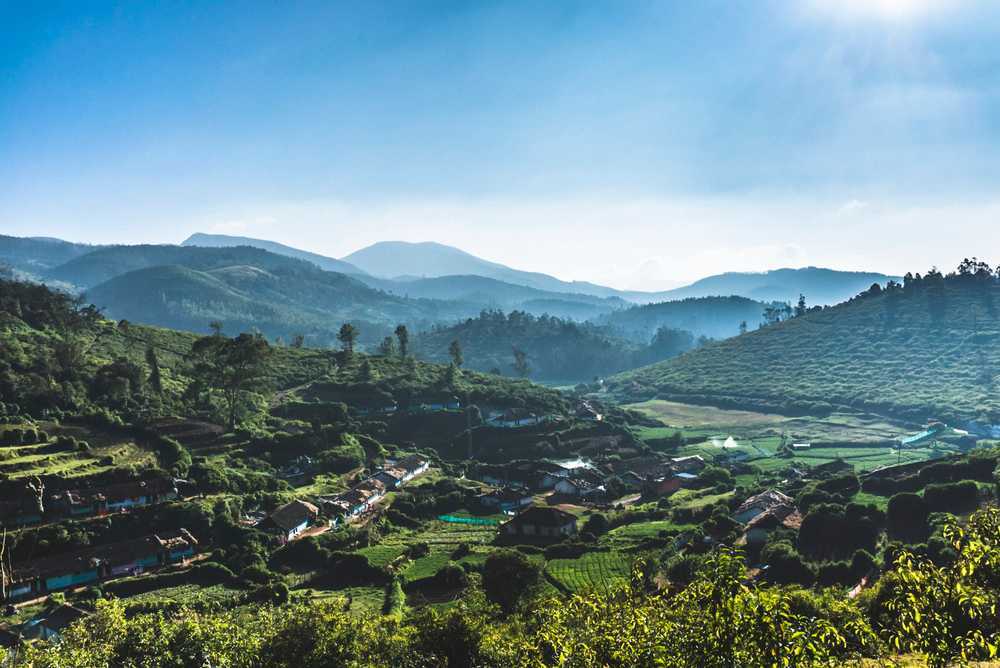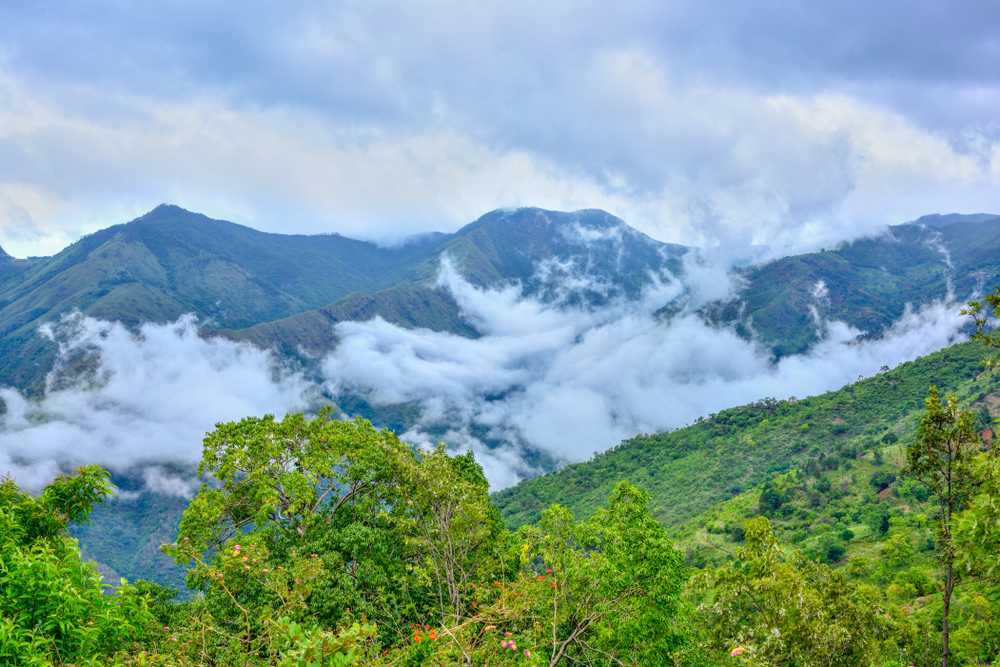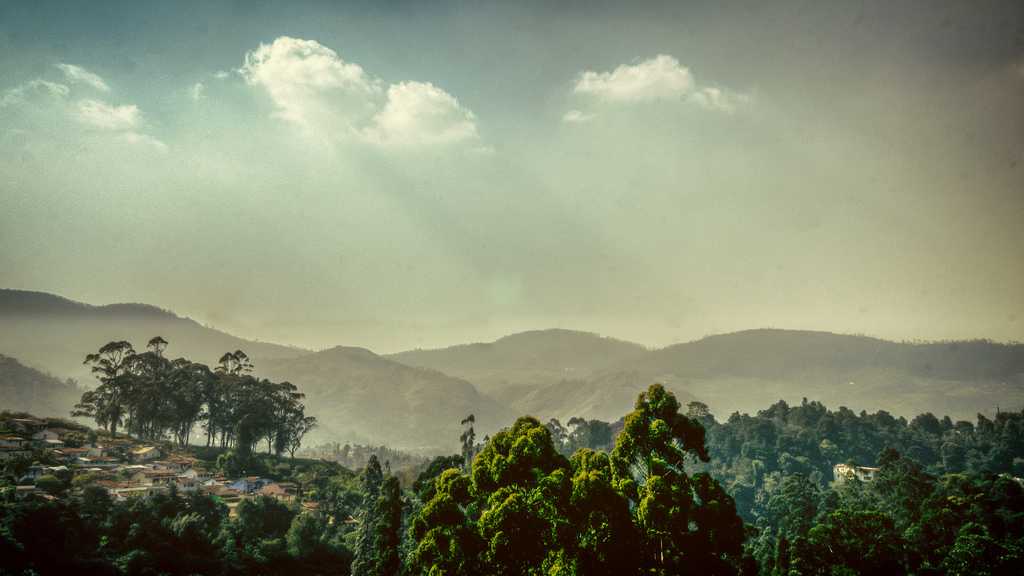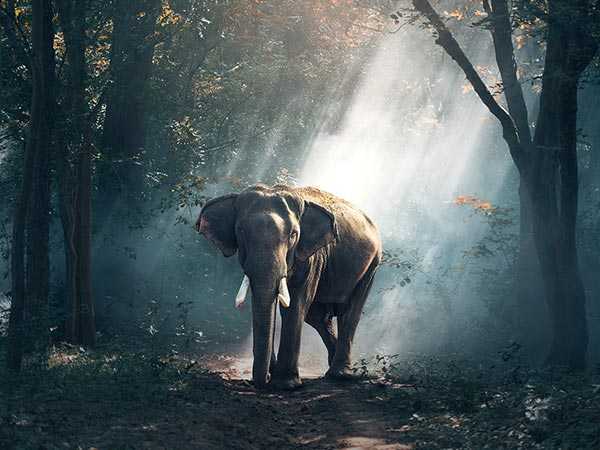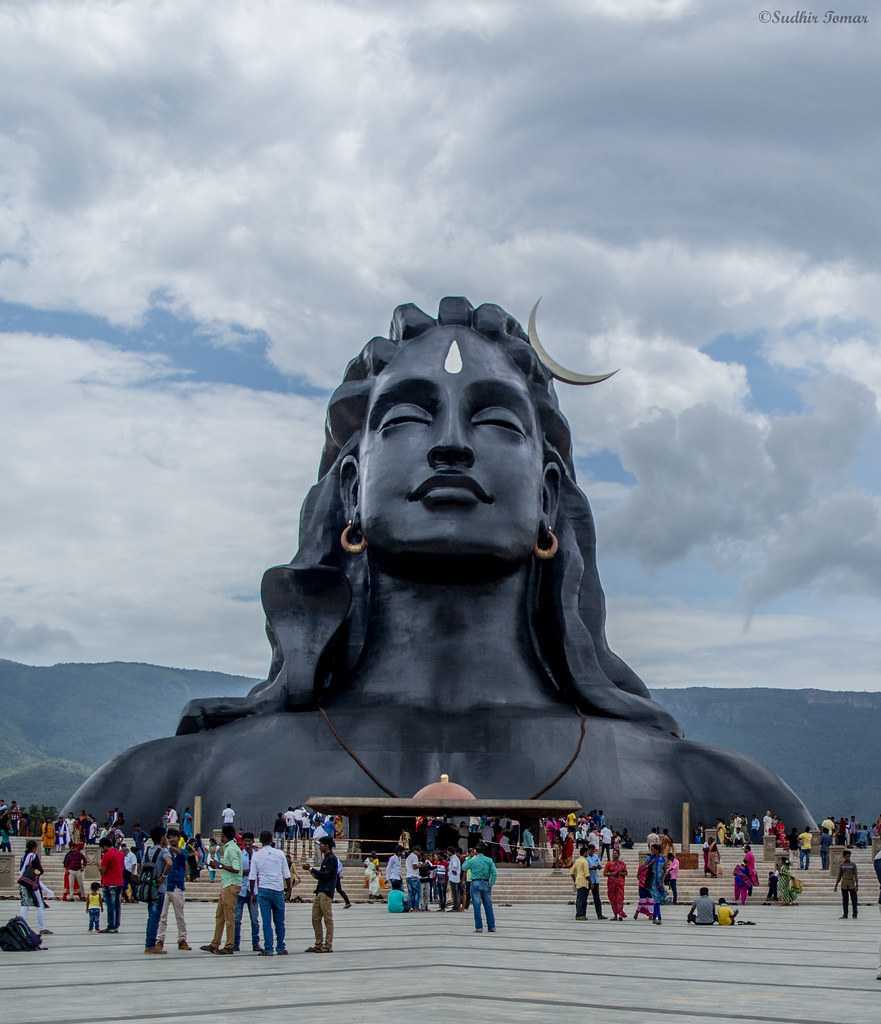NILGIRI BIOSPHERE RESERVE
Hey there fellow wanderlusts, have you ever heard of the Nilgiri Biosphere Reserve? If not, then you're in for a treat! It's a place where nature meets adventure, and where the wild things roam free. But don't worry, it's not like Jurassic Park.
The Nilgiri Biosphere Reserve is located in the southern part of India, spanning across the states of Tamil Nadu, Kerala, and Karnataka. It was designated as a biosphere reserve by UNESCO in 1986 and covers an area of 5,520 square kilometers. That's roughly the size of Rhode Island!
Now let me tell you why it's worth a visit. Picture yourself trekking through lush green forests with sightings of Indian elephants, tigers and leopards! If that doesn't get your heart racing then maybe spotting Nilgiri Tahr (an endangered goat-like species) will do it for you.
But wait there's more! You'll also get to see some breathtaking views from the Doddabetta Peak, which is the highest peak in Tamil Nadu at 2,637 meters above sea level. And let's not forget about those picturesque tea estates that are sure to give your Instagram feed a boost.
So what are you waiting for? Pack your bags and head over to this remarkable destination where nature is at its best and adventure awaits you at every turn.
Table of Contents
- Introduction
- History and Culture of Nilgiri Biosphere Reserve
- How to Reach and getting around Nilgiri Biosphere Reserve
- Weather of Nilgiri Biosphere Reserve
- Places to Visit in Nilgiri Biosphere Reserve
- Food Options and Local Cuisine of Nilgiri Biosphere Reserve
- Best areas for Accommodation in Nilgiri Biosphere Reserve
- Shopping in Nilgiri Biosphere Reserve
- Nightlife in Nilgiri Biosphere Reserve
- Festivals and Events in Nilgiri Biosphere Reserve
- Tips for Travelers travelling to Nilgiri Biosphere Reserve
- FAQs
History and Culture of Nilgiri Biosphere Reserve
Nilgiri Biosphere Reserve is a haven for nature lovers in India. It is located in the Western Ghats and covers an area of 5,520 square kilometers. The reserve is home to a diverse range of flora and fauna, including tigers, elephants, leopards, and over 3,300 species of plants. Nilgiri Biosphere Reserve has a rich history dating back to the ancient times when it was ruled by several dynasties. However, the reserve gained international recognition in the 19th century when British botanist Robert Wight explored it.
The region's cultural heritage is also fascinating. The indigenous communities living in Nilgiri Biosphere Reserve have their unique way of life. They have been living in harmony with nature for centuries and have developed their traditional knowledge and practices. The tribes' dance performances are a treat to watch.
Tourists visiting Nilgiri Biosphere Reserve can enjoy various activities like trekking, camping, bird watching, and wildlife safaris. The scenic beauty of the reserve is mesmerizing. One can witness stunning views of rolling hills, cascading waterfalls, and lush green forests.
In conclusion, Nilgiri Biosphere Reserve is a treasure trove of natural wonders and cultural heritage. A visit to this place will leave you awestruck and rejuvenated. So pack your bags and get ready for an adventure-filled trip!
How to Reach and getting around Nilgiri Biosphere Reserve
By Air: The nearest airport to Nilgiri Biosphere Reserve is Coimbatore International Airport, located about 100 km away. One can hire a taxi or take a bus from the airport to reach the reserve.
By Train: The nearest railway station to Nilgiri Biosphere Reserve is Mettupalayam Railway Station, which is about 40 km away. From there, one can take a taxi or board a bus to reach the reserve.
By Road: Nilgiri Biosphere Reserve is well-connected by road. One can take a bus or hire a taxi from nearby cities like Coimbatore, Ooty, and Mettupalayam to reach the reserve. The reserve is located on NH 181 and NH 67.
By Bike: For adventure enthusiasts, biking to Nilgiri Biosphere Reserve can be an exciting option. The scenic route offers breathtaking views of tea gardens and dense forests. However, one must ensure that they have proper gear and follow traffic rules.
Trekking: For those who love trekking, there are several routes that lead to Nilgiri Biosphere Reserve. Trekking through lush green forests and spotting rare wildlife along the way can be an unforgettable experience.
Cycling: Cycling is another great option for those who enjoy outdoor activities. Cycling through the winding roads of Nilgiri Biosphere Reserve can be an exhilarating experience.
Horse Riding: Horse riding through the scenic trails of Nilgiri Biosphere Reserve can be a unique way to explore the beauty of the reserve. One can rent horses from nearby stables and enjoy a leisurely ride through nature.
No matter what mode of transportation one chooses, reaching Nilgiri Biosphere Reserve is sure to be an adventure in itself.
Weather of Nilgiri Biosphere Reserve












 Extreme Winters
Extreme Winters Mild Winters
Mild Winters Hot + Dry
Hot + Dry Hot + Humid
Hot + Humid Rainy
Rainy Cool and Pleasant
Cool and PleasantThe Nilgiri Biosphere Reserve is an enchanting place located in the Western Ghats of India. The weather in Nilgiri Biosphere Reserve is pleasant throughout the year, but the monsoon season can be quite heavy and can cause landslides. The temperature during summers ranges from 15°C to 20°C, while during winters, it ranges from 3°C to 10°C. The misty mornings and cool breeze make it a perfect escape from the scorching heat of the plains.
The best time to visit Nilgiri Biosphere Reserve is from October to June when the weather is pleasant and suitable for wildlife safaris, trekking, and other outdoor activities. The months of December to February are ideal for experiencing the winter chill and enjoying a cup of hot tea while admiring the scenic beauty of the reserve. During this time, one can witness migratory birds flocking to this place.
In contrast, monsoon season starts from July and lasts till September. Heavy rainfall leads to slippery roads and increased chances of landslides, making it less safe for visitors. Hence it is advisable not to visit during this period.
Overall, Nilgiri Biosphere Reserve is an excellent destination for nature lovers who want to witness picturesque landscapes and rare species of animals and birds. Plan your trip accordingly by visiting between October to June for a memorable experience.
Places to Visit in Nilgiri Biosphere Reserve
Ooty Botanical Garden: The Ooty Botanical Garden is a natural paradise with an extensive collection of plants, flowers, and trees. It is home to more than 650 species of plants and trees, making it a must-visit place for nature enthusiasts.
Mudumalai National Park: Mudumalai National Park is a wildlife sanctuary that houses several endangered species like the Indian elephant, Bengal tiger, and Indian leopard. The park also has a wide range of bird species and offers activities like jeep safaris and elephant rides.
Avalanche Lake: Located in Ooty, Avalanche Lake is one of the most beautiful spots in the Nilgiris. It is surrounded by lush green forests and offers stunning views of the surrounding hills.
Pykara Falls: Pykara Falls is another popular tourist destination in Ooty. The waterfall cascades down from a height of 55 meters and offers breathtaking views of the surrounding landscape.
Needle Rock Viewpoint: Needle Rock Viewpoint is located in Gudalur and offers panoramic views of the Nilgiri hills. It is a must-visit place for nature lovers and photographers.
Kalhatty Waterfalls: Kalhatty Waterfalls are situated at an altitude of 1220 meters above sea level near Kalhatty village in Tamil Nadu. The waterfall cascades down from a height of 120 meters and offers stunning views of the surrounding landscape.
Mukurthi National Park: Mukurthi National Park is located on the Nilgiri Plateau and is home to several endangered species like the Nilgiri Tahr, Indian bison, and Asian elephant.
Doddabetta Peak: Doddabetta Peak is the highest peak in Tamil Nadu with an elevation of 2,637 meters above sea level. It offers breathtaking views of the surrounding landscape and attracts tourists from all over India.
Emerald Lake: Emerald Lake is a serene spot located near Ooty that offers scenic views of the surrounding hills and forests. It is an ideal spot for picnics or just relaxing amidst nature.
Kotagiri Hill Station: Kotagiri Hill Station is one of the most beautiful hill stations in South India with lush green forests, tea estates, waterfalls, and trekking trails that attract tourists throughout the year.
Adventures Activities
Romantic Places
Relaxing Retreats
Hilly Regions
Nearby Forests
Food Options and Local Cuisine of Nilgiri Biosphere Reserve
Best areas for accommodation in Nilgiri Biosphere Reserve
The Nilgiri Biosphere Reserve is a stunning region in the Western Ghats, known for its rich biodiversity and scenic beauty. If you are planning to visit this area, it's important to choose the right accommodation that suits your needs and preferences. Here are some of the best areas for accommodation in the Nilgiri Biosphere Reserve:
- Ooty: Ooty is a popular hill station located in the Nilgiri Hills, and it's one of the most visited tourist destinations in South India. It has a range of accommodation options, from luxury resorts to budget hotels and homestays. It's also well-connected to other parts of the Nilgiri Biosphere Reserve, making it a convenient base for exploring the area.
- Coonoor: Coonoor is another picturesque hill station in the Nilgiris, located about 20 km from Ooty. It's less crowded than Ooty and offers a more relaxed atmosphere. There are several homestays and guesthouses in Coonoor that offer comfortable accommodation at reasonable rates.
- Mudumalai: If you prefer staying closer to nature, Mudumalai is an excellent option. It's a wildlife sanctuary located on the border of Tamil Nadu and Karnataka, known for its diverse flora and fauna. There are several eco-resorts and jungle lodges in Mudumalai that offer an immersive experience of living amidst nature.
Here are three properties for accommodation in the Nilgiri Biosphere Reserve:
- Luxury: Taj Savoy Hotel Ooty - This luxury hotel is located amidst 6 acres of landscaped gardens, offering stunning views of the Nilgiris. It has spacious rooms with modern amenities, including a fitness center, spa, and outdoor pool.
- Budget: Hotel Lakeview - This budget hotel is located close to Ooty Lake, offering comfortable rooms at affordable rates. It has an on-site restaurant serving Indian and Chinese cuisine.
- Hostel: Zostel Coonoor - This backpacker hostel offers dormitory-style accommodation with shared bathrooms and common areas. It has a lively atmosphere with regular events such as movie nights and bonfires.
Overall, there are plenty of options for accommodation in the Nilgiri Biosphere Reserve that cater to different budgets and preferences. Whether you're looking for luxury or budget options or want to stay close to nature, you're sure to find something that suits your needs.
Shopping in Nilgiri Biosphere Reserve
Nilgiri Biosphere Reserve is a beautiful and serene place located in the Western Ghats. The reserve is not only known for its picturesque beauty but also for its shopping options. Visitors can indulge in shopping while enjoying the natural beauty of this place. Here are some things you can buy, markets to visit, and things to avoid while shopping in Nilgiri Biosphere Reserve.
Things to buy:
- Tea: Nilgiri Biosphere Reserve is known for its tea plantations, and visitors can buy different varieties of tea from here.
- Honey: The reserve has a variety of honey produced by bees that feed on various flowers and herbs found in the area.
- Spices: One can find various spices like cardamom, pepper, and cinnamon here.
- Handicrafts: Visitors can buy handmade items like pottery, baskets, and wood carvings made by the local people.
Markets to visit:
- Coonoor Market: This market is famous for its fresh produce like fruits, vegetables, flowers, and spices.
- Ooty Market: It is the most popular market in the region where visitors can find a variety of items like clothes, handicrafts, and souvenirs.
- Kotagiri Market: It is a small market but offers fresh produce like fruits, vegetables, and spices.
What to avoid:
- Non-licensed shops: Visitors should avoid buying from non-licensed shops as they might sell fake or low-quality products.
- Plastic products: The use of plastic is banned in the reserve; therefore, visitors should avoid buying plastic products.
- Endangered Wildlife Products: Visitors should avoid buying products made from endangered wildlife species as it is illegal and against ethical norms.
- Expensive souvenirs: Avoid buying expensive souvenirs sold by some vendors as they may be overpriced.
In conclusion, shopping in Nilgiri Biosphere Reserve can be an excellent experience for visitors who want to explore local culture while indulging in some retail therapy. However, it is essential to keep ethical considerations in mind while shopping here.
Nightlife in Nilgiri Biosphere Reserve
Nilgiri Biosphere Reserve is a haven for nature lovers and adventure enthusiasts alike. The reserve is not only known for its diverse flora and fauna but also for its vibrant nightlife. The region offers numerous options for tourists to spend the night while enjoying the ambiance of the forest.
1. Silent Valley National Park: The park is a perfect place to spend a night in the lap of nature. It is one of the most peaceful places in the region, and you will be amazed by the silence which engulfs the entire area.
2. Ooty Lake: Ooty Lake is one of the most popular tourist attractions in Nilgiri Biosphere Reserve. The lake offers various activities such as boating, horse riding, and cycling. Spending a night near this lake can be a mesmerizing experience.
3. Avalanche Lake: Avalanche Lake is surrounded by lush green forests and mountains, making it an ideal place for camping. You can indulge in activities like trekking or fishing during the day and enjoy stargazing at night.
The nightlife in Nilgiri Biosphere Reserve is quite different from what you might experience in cities. The entire area gets enveloped in silence after dark, except for the chirping of crickets and other nocturnal creatures. Spending a night under starlit skies while enjoying bonfire with friends or family can be a memorable experience that you will cherish forever.
Apart from camping or stargazing, tourists can also explore nearby villages to get a glimpse of local culture or indulge in adventurous activities like trekking and mountain biking during their stay at Nilgiri Biosphere Reserve.
Outdoor Activities in Nilgiri Biosphere Reserve
The Nilgiri Biosphere Reserve is a marvelous destination for nature lovers and adventure seekers. Apart from the vibrant nightlife, the reserve offers an array of outdoor activities that allow visitors to immerse themselves in the beauty of nature. The reserve boasts of diverse landscapes, ranging from lush forests to rolling hills, making it a perfect destination for outdoor enthusiasts. Visitors can engage in several activities such as bird watching, trekking, and camping.
- Bird Watching: With over 350 species of birds found in the reserve, bird watching is a popular activity among tourists. The lush forests and grasslands are home to several endemic bird species such as Nilgiri Flycatcher, Nilgiri Pipit, and Black-and-Orange Flycatcher.
- Trekking: Trekking through the dense forests is an exhilarating experience that allows visitors to witness the breathtaking views of the surrounding hills and valleys. The reserve offers several trails ranging from easy to moderate difficulty levels, making it suitable for both novice and experienced trekkers.
- Camping: Camping amidst the serene surroundings of the reserve is an ideal way to disconnect from the hustle-bustle of city life. The reserve has several camping sites that offer basic amenities such as tents and campfire facilities.
In conclusion, visiting Nilgiri Biosphere Reserve provides a perfect opportunity to explore nature's beauty while engaging in exciting outdoor activities such as bird watching, trekking, and camping.
Festivals and Events in Nilgiri Biosphere Reserve
Festivals and events play an important role in the cultural heritage of Nilgiri biosphere reserve. These celebrations bring together the local communities and visitors to celebrate the diversity of this region. They provide an opportunity to showcase the traditional customs, art, music, and food of the area. Here are some of the major festivals and events that take place in Nilgiri biosphere reserve:
Pongal (January): This is a four-day harvest festival celebrated by the Tamil community in Nilgiri biosphere reserve. It is a time when people thank nature for its bounty and seek blessings for prosperity.
Ugadi (March-April): This is a new year festival celebrated by the Kannada and Telugu communities in Nilgiri biosphere reserve. It marks the beginning of a new cycle of seasons and is considered an auspicious time to start new ventures.
Ooty Summer Festival (May): This is a ten-day celebration held in Ooty, the popular hill station in Nilgiri biosphere reserve. The festival features flower shows, boat races, cultural performances, and a variety of adventure sports.
Toda Festival (May): This is an annual festival celebrated by the Toda tribe in Nilgiri biosphere reserve. It is a time when they offer prayers to their deities for good health, wealth, and happiness.
Mudumalai Wildlife Sanctuary Annual Flower Show (June-July): This is a two-day event held at Mudumalai Wildlife Sanctuary in Nilgiri biosphere reserve. The show features a variety of flowers grown locally as well as exotic species from other parts of India.
Kurumba Festival (December): This is an annual festival celebrated by the Kurumba tribe in Nilgiri biosphere reserve. It showcases their unique culture through folk dances, songs, and traditional games.
These festivals and events provide an excellent opportunity for tourists to experience the local culture while enjoying their stay in Nilgiri biosphere reserve. They are also an essential part of preserving and promoting cultural heritage for future generations to come.
Tips for Travelers while travelling to Nilgiri Biosphere Reserve
- Pack appropriately: The Nilgiri biosphere reserve is a biodiversity hotspot, with varying terrains and weather conditions. Travelers are advised to pack accordingly, with suitable footwear for trekking, warm clothes for the chilly evenings, and insect repellent to prevent bites from mosquitoes and other insects. It is also recommended to carry a water bottle and snacks for the long hikes.
- Respect local customs and traditions: The Nilgiri biosphere reserve is home to various indigenous communities who have their distinct customs and traditions. Travelers are advised to respect these beliefs while interacting with the locals. They should also dress modestly while visiting religious sites or attending festivals.
- Observe wildlife from a distance: The Nilgiri biosphere reserve is home to several endangered species of flora and fauna, such as tigers, elephants, and orchids. While exploring the region's rich biodiversity, travelers should maintain a safe distance from wildlife to avoid any mishaps.
- Follow eco-friendly practices: The Nilgiri biosphere reserve is a fragile ecosystem that needs to be conserved for future generations. Travelers are encouraged to follow sustainable tourism practices such as avoiding littering, using reusable water bottles instead of plastic ones, and supporting local businesses that promote ecotourism.
- Be prepared for network connectivity issues: While the Nilgiri biosphere reserve offers an escape from the hustle-bustle of city life, it also means limited network connectivity in some areas. Travelers are advised to inform their loved ones about their itinerary beforehand and carry offline navigation maps or guidebooks in case they get lost.
In conclusion, visiting the Nilgiri biosphere reserve can be an enriching experience for travelers who love nature and adventure. By following these tips, they can make their trip hassle-free while also contributing towards preserving this unique ecosystem.
FAQs
What is Nilgiri Biosphere Reserve?
Nilgiri Biosphere Reserve is a protected area covering an area of 5,520 square kilometers in the Western Ghats and Nilgiri Hills of southern India. It was declared as a biosphere reserve in 1986, and it includes parts of Tamil Nadu, Kerala, and Karnataka.
What is the significance of Nilgiri Biosphere Reserve?
The Nilgiri Biosphere Reserve is significant for its unique biodiversity and cultural diversity. It is home to several endangered species such as the Bengal tiger, Indian elephant, and lion-tailed macaque. The reserve also has several tribal communities living within its boundaries that have a rich cultural heritage.
How many national parks are included in Nilgiri Biosphere Reserve?
There are three national parks included in the Nilgiri Biosphere Reserve: Mudumalai National Park, Bandipur National Park, and Silent Valley National Park.
What kind of vegetation can be found in Nilgiri Biosphere Reserve?
The vegetation in the Nilgiri Biosphere Reserve varies from tropical rainforests to dry deciduous forests. It is home to several endemic species such as the Neelakurinji flower that blooms once every twelve years.
Can tourists visit Nilgiri Biosphere Reserve?
Yes, tourists can visit certain areas of the Nilgiri Biosphere Reserve with permission from the forest department. There are several ecotourism activities available such as safari tours and trekking.
What are some threats to the biodiversity of Nilgiri Biosphere Reserve?
Some threats to the biodiversity include deforestation for agriculture and timber extraction, poaching, and invasive species. Climate change also poses a threat to the fragile ecosystem.
What conservation efforts are being taken to protect Nilgiri Biosphere Reserve?
Several conservation efforts have been taken to protect the reserve such as reforestation programs, anti-poaching patrols, and community-based conservation initiatives. The government has also implemented strict regulations on tourism activities to minimize their impact on the environment.
